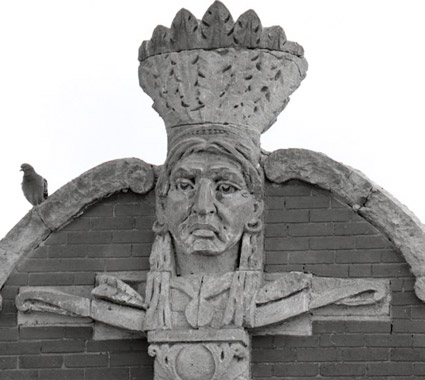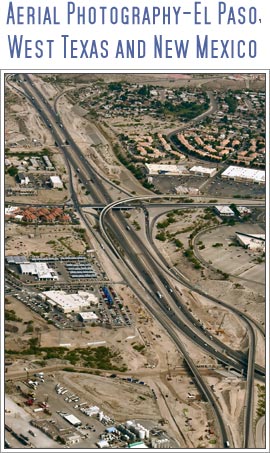
History of Photography in El Paso
August 20th, 2020

"Since the establishment of San Elizario as the first county seat in March of 1850, photographers have used still photography to capture the people, events and structures of El Paso."
Lawless Beginnings
The arrival of the railroads in 1880's was a notable turn in West Texas history , as it raised El Paso from an unassuming desert town into a thriving, bustling city of businessmen, gamblers, entrepreneurs, prostitutes and outlaws. No other city in America could show it's true western grit like El Paso did, and indeed, true lawlessness was a big part of it.
Stirring The Pot
Even by 1900, El Paso was considered the "Six Shooter Capital," and with the start of the Mexican Revolution in 1910, things began to get stirred up even more. Along with the typical outlaws shooting it up with revolvers, there were military actions from the U.S. on both sides of the border. Moreover, Adding to the pot of U.S. troubles was the pursuit of small factions and the efforts to de-stabilize them. By 1917, there was no shortage of imposing photos, including those of Ft. Bliss, the Madero's Camps, and the bandit-like antics of Francisco "Pancho" Villa.
Although El Paso claimed its unforgettable role in the Age of Gunfights, positive forces are undeniably worth mentioning here too, as early influences would eventually help put El Paso in a more positive light. El Paso, now known as the Sun City, is a destination spot for tourism, historic hotels, food, culture, scenery, beautiful real estate, and a major contributor to the manufacturing and industry sectors.
El Paso Growth
It remained a turbulent time in El Paso, but was also showing positive signs of growth as El Paso's brand was certainly changing for the better. By 1920, the population had skyrocketed to 77,000, and camera photography continued to make a larger and brighter mark on the El Paso timeline. Alfonso Casasola, an established Mexican photographer, came to El Paso and founded a successful photography business in 1921. With his studio on 511 S. El Paso Street, he contributed to the archives of historical imagery of El Paso.
"Periods of War"
Many wars or conflicts in U.S. history have dates that have been federally designated as "periods of war." These dates are periods of time that have marked the beginning and ending of very active and condensed periods of time in the U.S. involving wars and various other conflicts. An official report lists the beginning and ending dates for "periods of war" found in Title 38 of the Code of Federal Regulations, and also deal with information regarding the Department of Veterans Affairs (VA). It also lists and differentiates other beginning dates given in declarations of war, as well as termination of hostilities dates and armistice, and ending dates given in proclamations, laws, or treaties.
The Mexican Border Period
For the U.S. in general, it was a very active time in many respects, good and bad. Yes, the words "Turn of the 20th Century" were phrased, and is still used today to describe a very active time in America, El Paso, and Mexico. From (1910–20), the Mexican Revolution was a long and bloody struggle among several factions in constantly shifting alliances which resulted ultimately in the end of the 30-year dictatorship in Mexico, as well as the establishment of a constitutional republic. The U.S. designated a "period of war" between May 9, 1916, through April 5, 1917 signifying the case of a veteran who during such period served in Mexico, on the borders thereof, or in the adjacent waters thereto. Code of Federal Regulations, 3.2 (h).
American Smelting & Refining Company (ASARCO)
What a time it was to be alive, as world events collided with the rise of photography. El Paso was certainly no exception, and if you want to know the story of early to mid-20th century El Paso, a good place to start is with photo archives. Yes, El Paso can be recognized from a simple black and white photo depicting a smoke stack that once stood over 500 feet high. No captions were necessary to convey this gigantic cylindrical structure that was once considered an industrial marvel. Arguably, ASARCO helped to establish El Paso as a manufacturing hub, and although it no longer exists, proud El Pasoan's can still say it once belonged to El Paso.
ASARCO and the Mexican Revolution were heavy influences that inspired photographers to create extensive picture archives of El Paso. However, there was a lot of activity going on in the El Paso area during the turn of the 20th Century, and thus a diverse collection of imagery can be seen from postcards, portraits, drawings, books and art.
Archive Sources
The UTEP research guides features a special collection of historical information containing photos, negatives, books, art, and other sources of information. If you are looking for a specific item, you can make an appointment at (915) 747-5697.
El Paso Herald-Post - The El Paso Herald-Post contains records and photographs
from 1881-1997, and also contains negatives obtained between 1980-1997.
ASARCO - Historical records of the former ASARCO El Paso smelter site.
The trustee of the site turned over many documents that had been left at the site to the University of
Texas at El Paso Library.
Hugh Bascom Wilson Railroad Collection - Consists of materials relating to
the history of the El Paso Division of the Southern Pacific Railroad Company. Materials include books,
photographs, maps, periodicals, blueprints, blue line drawings, reports, bulletins, and
correspondence.
Brian Kanof Photo - The Brian Kanof Photo studio contains an archival
collection El Paso photos that date from the mid 1960's to the present.
Ada Tharp Photograph Collection
This elaborate collection contains photographs dating from about 1870 to 1925. The types of photographs include tintypes, cabinet cards, cartes de visite, silver gelatin prints, and photo booth snapshots. The album was abandoned in a freight forwarding facility in Kentucky and little is known about the creator of the collection. It was found by an employee who took it to a local library where a librarian noticed that many of the photographs had been taken by El Paso photographers. She donated them to the UTEP Library. A small amount of correspondence found with the album was addressed to Ada Tharp, Thorp, or possibly Thorne, so she was given credit as the original owner. Only a few of the photographs are identified. The subjects of the photographs include African American men in military uniforms, many photos of African American women and children, and other well-dressed people. Besides El Paso, Texas, many other locations are mentioned including other cities all over the U.S.
Many talented photographers have added to the image archives of the beautiful Southwest. Their efforts have created memorable shots of the first mule-drawn streetcars service (1881), bustling downtown streets and hotels (1920's), the El Paso Municipal Airport (1929), the Mt. Franklin Star (1940), and many modern-day photos taken by the Brian Kanof photography studio. They've all helped to identify El Paso as a unique city.

Find us:
Aerial Photography Services:
- Construction Progress
- Destruction Progress
- Real Estate
- Editorials
- Photojournalism
- Land Surveys
- Events

